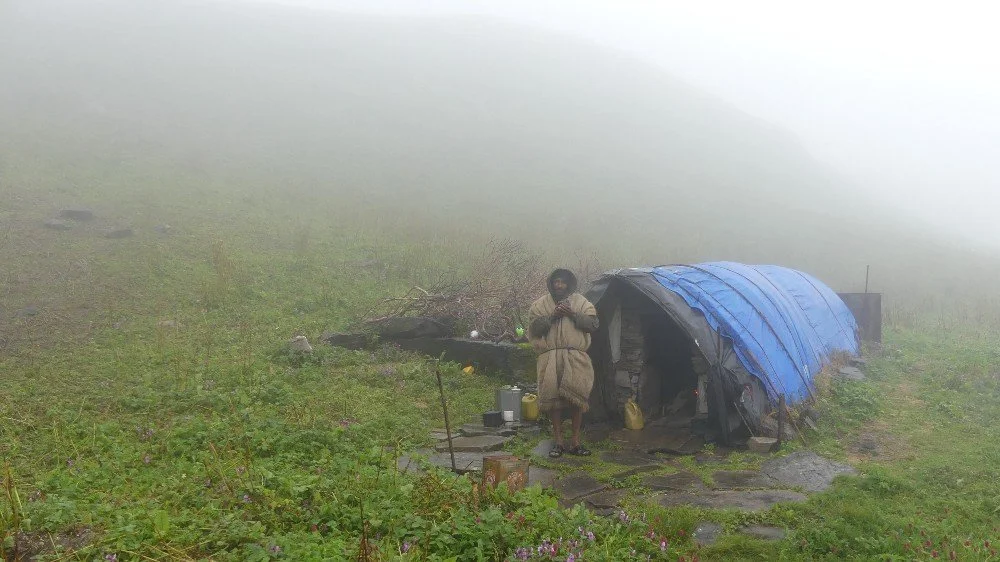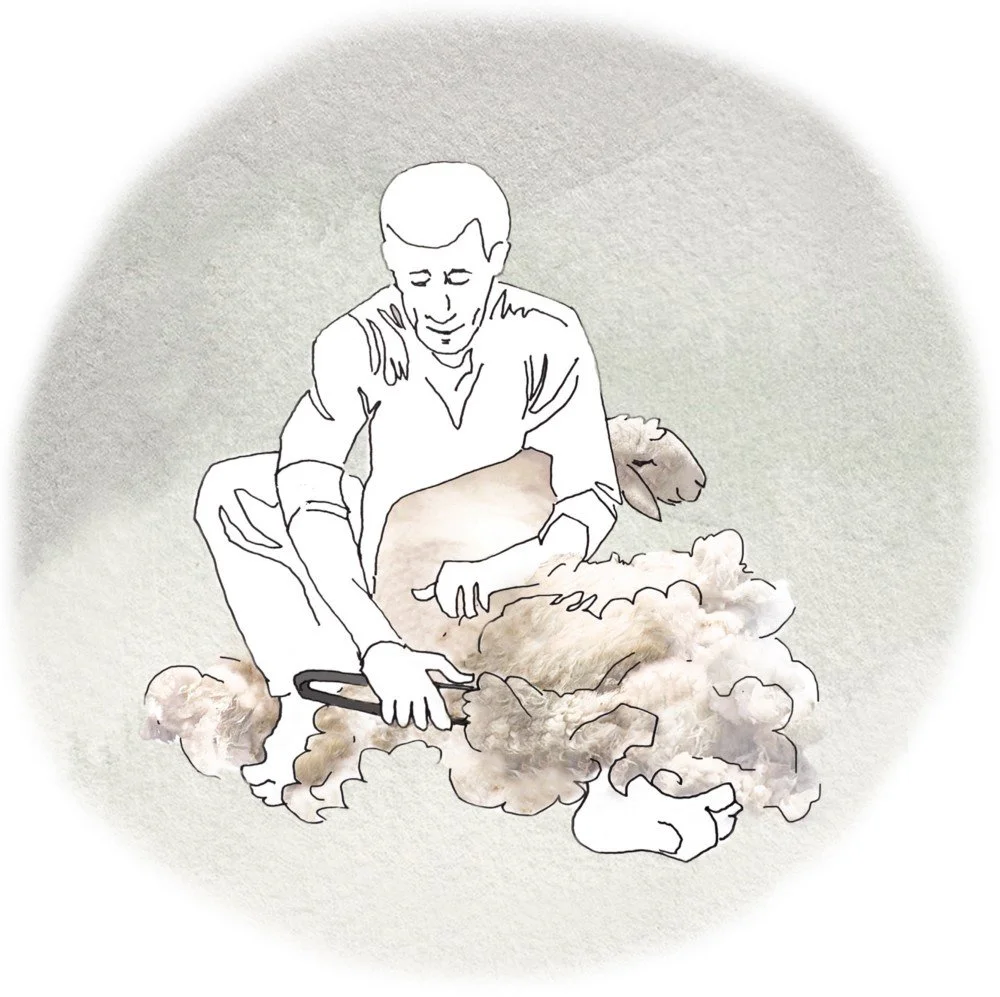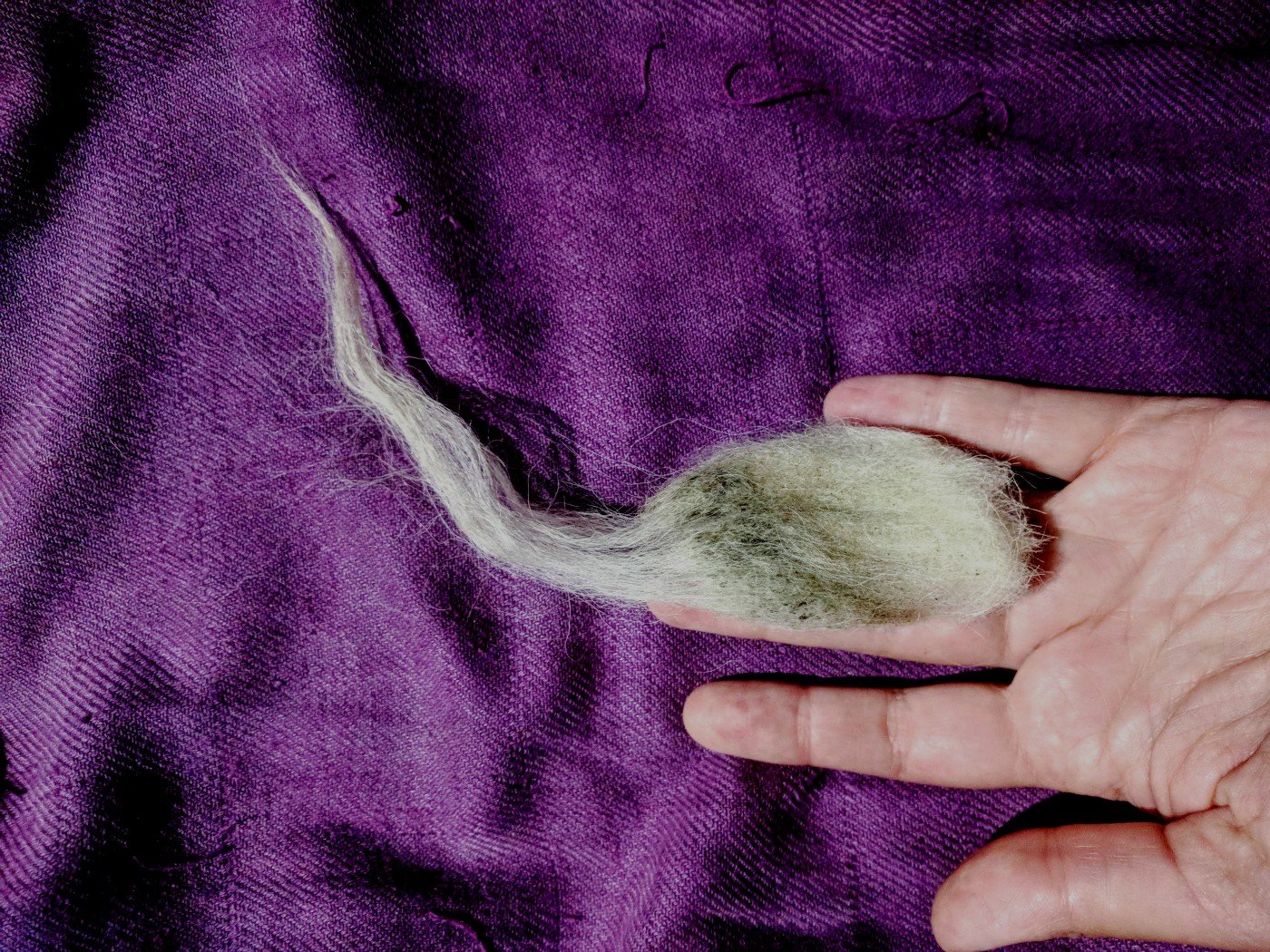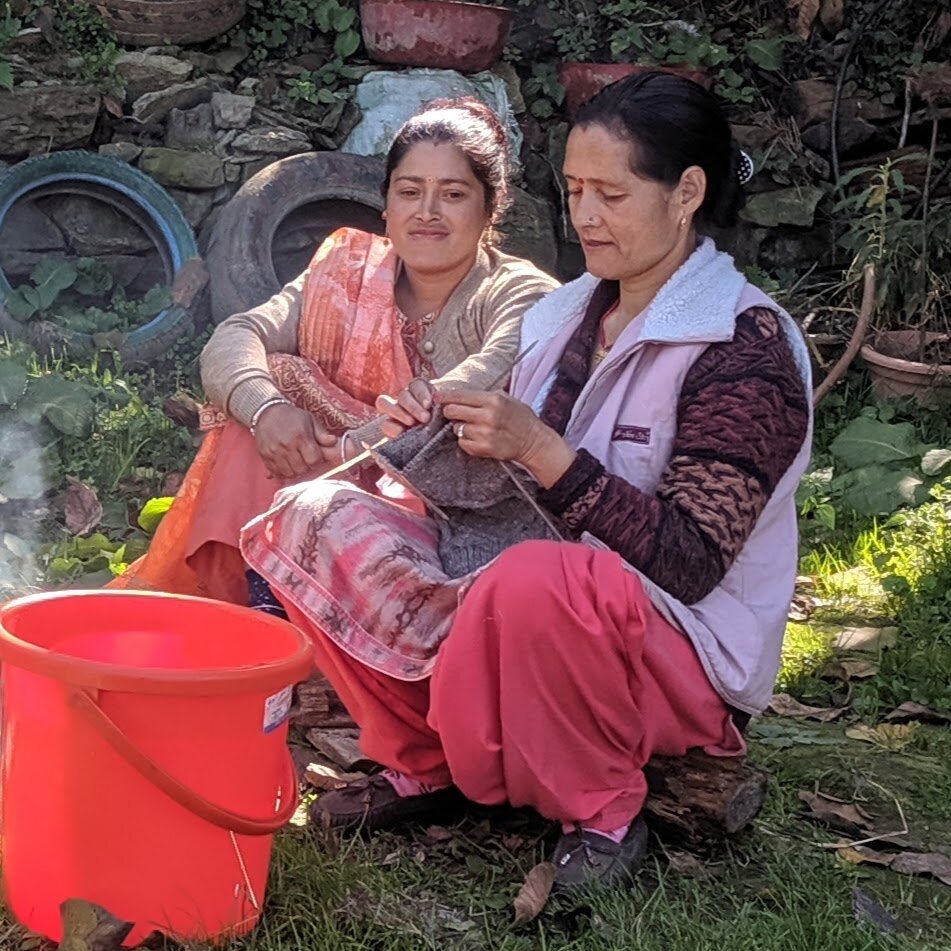Sheep and Wool of the Himalayan Ecosystem
Gaddi Herders overlooking their herds on alpine pastures. Image by Peter Van Geit
“When I started work a kilo of honey, ghee, chillies, and desi wool were the same! In the past decades, the price of wool compared to the other three fell. No demand….and suddenly there is a spurt again. I hope our woollen handlooms are liked by you now…this is what we have done for the last 35 years…this is what we know how to do well.”
Image: A pastoral hut on an alpine meadows in Garhwal, Uttrakhand. Image by Shepherds of Himalaya
The mighty Himalayas sheath many unexplored swathes of pristine meadows, shelter diverse shepherding communities, nimble footed flocks of goats and sheep, and diverse wool cultures and economies. The alpine meadows are the heartland of pastoral systems in the western Himalayas, and every year, with the onset of summer, the Gaddis, Kinnauris, Kannets, Lahaulis, Pangis of Himachal Pradesh, and Changpas of Ladakh, the Palsis of Garhwal, the Bhotias of Kumaon, Bakarwals of Kashmir, amongst many others, make their way to the alpine pastures ~ the bugyals. The sheep follow their keeper as they head to the high passes and navigate treacherous tracts, driven by dreams of bountiful green grass, clear water and fresh air at the end of the climb!
Up in summers, down in winters — the semi-nomadic shepherds spend days of mystic solitude on the high ranges and start climbing down as winter approaches. Grazing resources are abundant on the meadows and the shepherds are most relaxed when they are on the alpine tops. In keeping with their seasonal migration, sheep across the western Himalayas, are shorn twice a year — in fall, and then again in spring. The best wool is the one shorn high up in the mountains before the herd descends for winter. This post-autumn harvest of wool matches the largesse of mother nature, and they are the softest, longest and finest of all wool produced in India. The flocks are fed on the highly nutritious grasses of the alpine meadows in summer, and as they come down the gentle slopes of the alpines, the sheep coat is luminous and clean, without the vegetative matter that gets locked in their wool when they go to the lower hills and plains in winter. As Jen Hoover, a wool researcher-artisan, who has been active engagement with research on wool and wool crafts in the Himachal, puts it
“Wool embodies place, and time. Even as each strand of wool grows out from the sheep’s skin, it becomes a record of the sheep’s experiences in the time between shearings. Where they eat and what they eat is revealed in the growth and quality of their wool… and when I hung out with the Gaddis in Chota Banghal, they started to point out to the few sheep that they identify as “desi,” — native or local — in contrast to the more dominant mixed breed which they variously identify as cross, merini, or Australia.”
Shearing on the alpine meadows.
Illustration by Sandeep VIrmani
Sheep of Himachal carry this unique double coat; the long fine fibres sheath a coarse coat of shorter fibres.
“The desi is unique in its double-coated wool — the presence of two distinct types of fibre within the fleece of a single sheep — one long, relatively coarse and low-crimp, and one that is shorter, finer, and crimpier — two timescales expressed side-by-side within the same fleece!” –
adds Jen
Image by Jen Hoover
Image: The Harsil sheep of Uttrakhand. Image by Vasanthi Velluri
In the tail of the sheep also lie tales of its nativity! The purest of the indigenous sheep are often distinguished by their short tails. The Palsi shepherds of Garhwal revere their small, predominantly black, some white, and some red-brown Kathis. And across Garhwal and Kumaon, their hearts remain warmed by talks of their Bhotiya — the local sheep breed named after their keepers, the Bhotiyas, who were nomadic pastoralists until 5 decades ago and settled down as artisans even as trade with Tibet declined. It is said that the Harsil sheep, named after the idyllic village, Harsil, in the Ganga Valley, which produces the best wool in the State, while Gaddi shepherds speak, rather wistfully, of the Gaddi and the Rampur Bushairi being their very own local sheep; but almost fully crossbred now, since decades, with exotic, imported breeds.
The hunger for sheep meat and finer wool in the global markets has gradually devoured the more resilient, but slighter woolly sheep breeds which have warmer, coarser wool. Losing presence and value to the ‘mixed’ and ‘improved’ flocks, with fine long wool; they are voracious, even undiscerning eaters , falling sick more often than the indigenous sheep breeds, which are choosy and small eaters. All the old time shepherds agree that the ‘desi’ were far more nimble footed than these ‘cross’ ones who find it harder to navigate the climbs and descents. But the younger shepherds are quick to tell us that these cross merinis are easier to shepherd, they are so much more obedient! ‘Dull, not obedient’ is the final pronouncement by a quiet 75 year old Gaddi herder from Karnarthu, Kangra!
Image: A dora being undergoing ‘Mandai’. Mandai is a process that applies the felted finish on woollens such as Gardus. Image by Jen Hoover
When the Himalayan Shepherds spend four to five months on the high reaches, the monsoon showers and cold nights find their able match in a Gardu ~ a dense woven woollen textile that has a felted finish which makes it impervious to continuous showers and the chilly winds alike. One possible reason why cheap plastic sheets have not been able to fully replace the Gardu, as it has in other parts of the country, is that plastic can only keep the rain away but not keep the body warm. Wool on the other hand generates a lot of heat as it absorbs water.
Living lightly in their pastoral dheras (camps), the shepherds of the Himalayas reside within this simple integrity of their wool, creating homes on the move with an array of wool crafted textile, techniques and textures.
The Knitter’s Office. Lata Sharma and her team mate of Kullvi Whims in action. Image by Nisha Subramaniam
Himalayas are also home to many knitters, a relatively new craft community. Though not a traditional craft practice, the knit crafts-women are known to be super dexterous. It is not uncommon to find women knitting on the move; they negotiate twisting trails and intricate designs at the same time with equal serenity; a testament to their focus, skill, and balance. They, along with the weavers and shepherds of Himachal Pradesh and Uttarakhand bring you a small flavour of new possibilities.







